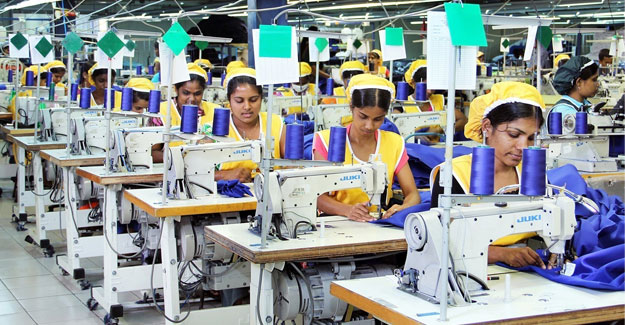
Sri Lankan Industry Eyes 6% Apparel Export Growth In 2020
Sri Lanka’s apparel industry targets a 6% year-on-year (YoY) growth in exports in 2020, moving ahead with plans to set up a 200-acre fabric park with foreign investments in collaboration with the Board of Investment (BOI) in the Eastern province, eyeing to attract large-scale orders by reducing lead times with locally-sourced fabrics. According to Sri Lanka’s Joint Apparel Association (JAAF), Sri Lanka’s apparel exports grew 5.8% to US$ 4.8 billion during January-November, last year, surpassing the initial expectations. The Sri Lanka Apparel Exporters Association (SLAEA) estimates apparel exports to have grown over 6% to US$ 5.3-5.4 billion by end-2019. “We are expecting growth to be around 6 percent overall for 2020, equally from both the US and EU markets. The industry expects a significant growth to come once the fabric park in Eravur is established, as we can source fabric locally, cutting down our lead times, instead of importing from overseas, specially from India and China. This is our main target for the year,” SLAEA Chairman Rehan Lakhany said. The apparel industry is currently awaiting the BOI to acquire the earmarked 200-acre land in Eravur to set up the proposed fabric park. “Once the land is acquired, we will be working in conjunction with the BOI to develop the land and then will invite potential bidders to set up a centralised water treatment plant. Consequently, we will also invite investors from overseas to set up fabric mills and other finishing facilities in Sri Lanka,” Lakhany said. Initially, the proposed fabric park is expected to attract foreign investments from China and India, in the range of US$ 50-100 million, to set up fabric mills and other finishing facilities. Many Chinese manufacturers have moved to Vietnam and Bangladesh. “Sri Lanka hasn’t been on their radar so far as we didn’t have proper facilities in Sri Lanka. Once the zone is in place, there will be lot of Chinese investments coming in,” he said. Although Sri Lanka has faster shipping times to the US and EU markets, due to its strategic location, Lakhany pointed out that the apparel exporters were unable to capitalise on this as the country has to import fabrics from overseas, which contributed to a significant increase of lead times. “With locally-sourced fabrics, we can target much bigger orders. Further, we will also be saving lot of foreign exchange spent on fabrics as the local value addition increases,” he said. In addition, polyester fabrics, which account for over 50% of fabric requirement, don’t qualify for the EU’s GSP Plus concessions as it is being imported from China. “If we set up a plant to finish processing polyester fabrics in the fabric park, it will be qualified for GSP Plus,” Lakhany highlighted. In particular, locally-sourced fabric remains crucial for the industry to reach its medium-term target of US$ 8 billion in apparel exports by 2025. The fabric park is expected to be fully operational within two years, given no delay in the BOI’s role in terms of facilitation. Meanwhile, Lakhany expressed his concerns over the slow progress in FTA talks with India and China, which have come to a grinding halt since last year. Sri Lanka’s apparel industry has been targeting to diversify its export base into the BRIC countries, in particular to India and China, as the growth in mature clothing markets has slowed down. During January-November, the US retained its position as Sri Lanka’s top apparel importer. Sri Lanka’s apparel exports to the US grew 3.76% YoY during the period to US$ 2.1 billion while the apparel exports to the EU grew at a faster rate of 6.13% YoY to surpass the US$ 2 billion mark. In addition, Sri Lanka’s apparel exports to other markets such as Canada, India, Australia, Japan and China grew 12% YoY to US$ 666.5 million.
Textile Excellence
If you wish to Subscribe to Textile Excellence Print Edition, kindly fill in the below form and we shall get back to you with details.








